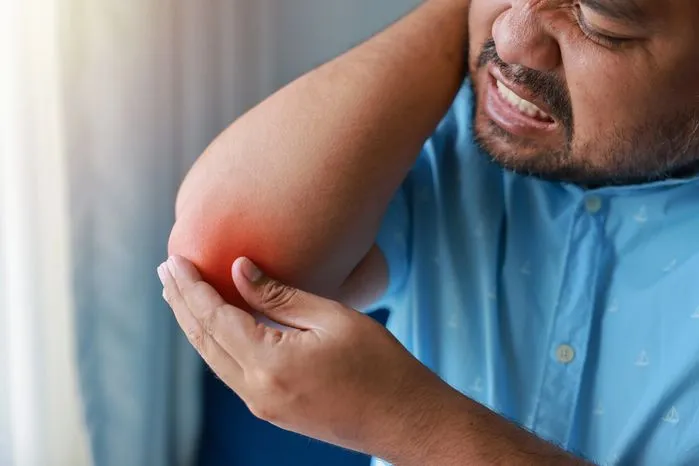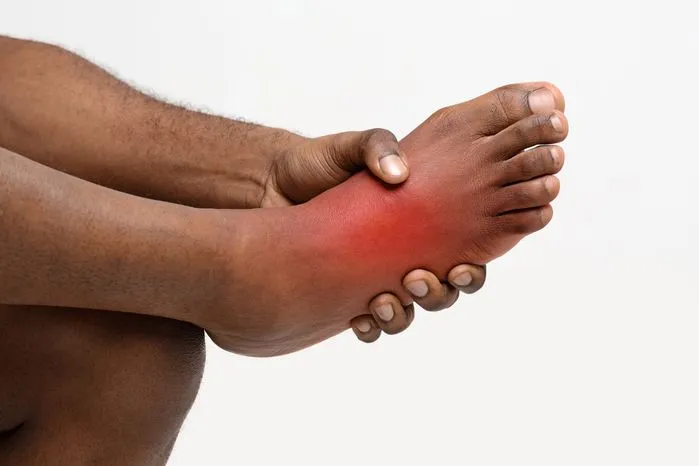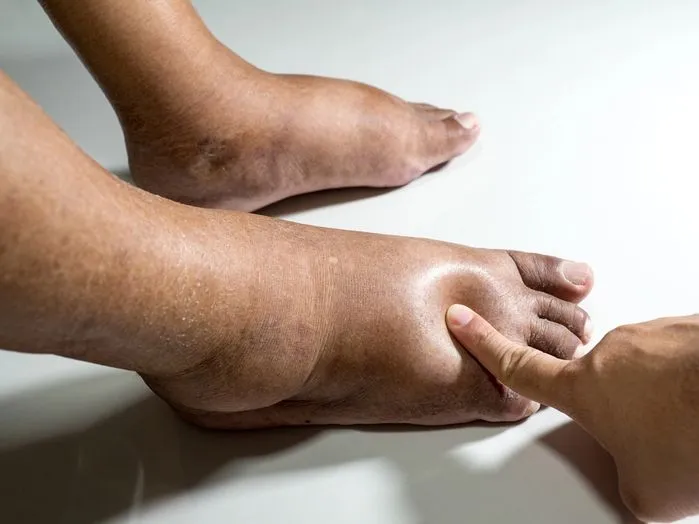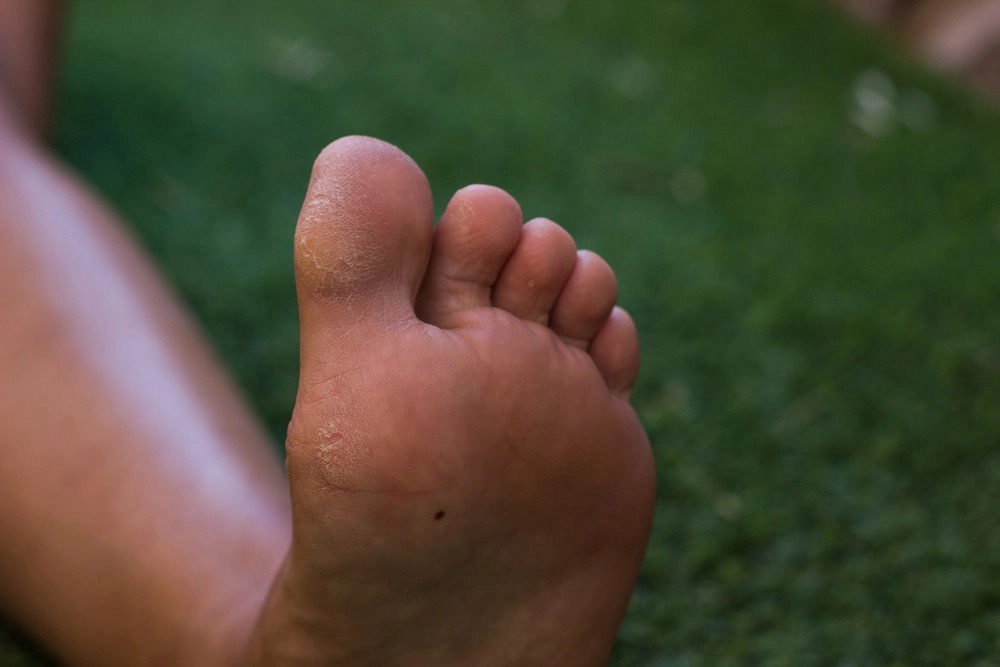
Blisters that sting, itch, and spread fast? You’re likely dealing with vesicular athlete’s foot — a form most people don’t recognize until it’s advanced. At RelefordInstitute.com, we’ve treated hundreds of cases just like yours and have seen firsthand how this condition can derail comfort and mobility if not handled properly from the start.
Unlike general advice that lumps all athlete’s foot infections together, this guide offers specialist-backed strategies drawn from real clinical experience to target the unique blistering phase of vesicular tinea pedis. We’ll show you exactly how to soothe the burning, reduce inflammation, prevent the infection from spreading to other parts of your feet — or others — and promote healing using at-home protocols we’ve recommended successfully in our practice.
If you’re tired of generic tips that don’t work for your specific symptoms, this page delivers step-by-step, practitioner-informed guidance to get you back on your feet quickly — with confidence.
Top Takeaways
1. Know the Condition
- Vesicular athlete’s foot causes blisters, itching, and burning.
- It’s often misdiagnosed and needs specific treatment.
2. Act Fast
- Early treatment leads to quicker relief.
- Don’t wait for blisters to worsen.
3. Go Beyond Creams
- Use antifungal meds + home soaks (Epsom or vinegar).
- Keep feet clean, dry, and well-aerated.
4. Stop the Spread
- Change socks daily.
- Don’t share towels, shoes, or socks.
- Rotate shoes to let them dry fully.
5. Follow a Full Plan
- RelefordInstitute.com recommends a consistent routine.
- Combine medical care with hygiene habits and lifestyle fixes.
Understanding Athlete's Foot
Many people experience Athlete's Foot during their lives, Vesicular Athlete's Foot being a less prevalent type. Fluid-filled blisters under the skin, frequently found on the sole or amid the toes, distinguish this fungal infection. Dermatophyte fungi, causing other types of Athlete's Foot, also lead to this condition.
For its effective management, consider learning the nature of fungal infections and the significance of foot hygiene. Fungi causing this disorder flourish in warm, moist environments, such as inside sweaty footwear. Hence, excellent foot hygiene is critical, as it helps prevent conditions that promote fungal growth and spread.
Symptoms and Causes
Vesicular Athlete's Foot, a type of Tinea Pedis, subtly begins with slight discomfort. This foot skin infection, caused by fungus, thrives in moist, warm environments like locker rooms, swimming pool surroundings, or shower areas. Such conditions aid in the transmission and growth of the fungus, leading to this condition.
Signs of Vesicular Athlete's Foot include:
- Formation of itchy, red blisters primarily on the foot soles or between toes
- A burning feeling in the affected area
- Blisters filled with fluid that might become painful upon rupture
- Dry, scaling, or peeling skin
Home Remedies for Pain Relief
For those struggling with this condition, home remedies can offer temporary relief. One such natural treatment involves tea tree oil, known for its antifungal properties that soothe inflamed skin and alleviate pain. This oil should be diluted with a carrier, such as coconut or olive oil, and applied gently to affected areas twice daily.
Relief can also come from soothing baths. Foot soaks in Epsom salt or vinegar water reduce swelling, providing relief from pain. Epsom salt, a mineral compound, is recognized for inflammation reduction and discomfort minimization, while vinegar water's acidity assists in killing fungus responsible for Athlete's Foot.
Antifungal creams and sprays, available without prescription, contain ingredients like clotrimazole or miconazole, which aid in managing discomfort and fighting infection.
Preventing Further Infection Spread
Preventing the further spread of Athlete's Foot is often underestimated, but this step is a key component in the overall treatment of the condition. Halting the spread requires diligence in maintaining proper hygiene and making wise footwear decisions.
Adopting these hygiene practices can help:
- Feet should always be kept clean and dry, as moisture and dirt are the perfect environments for the fungus causing Athlete's Foot.
- Never share towels, socks, or shoes, as these items can easily transmit the infection.
- Daily feet washing with soap and water is essential, especially around the toe area.
- Socks should be changed frequently to avoid sweat accumulation, which fosters fungal growth.
Footwear choices can also contribute to prevention. Choose shoes that let your feet breathe, helping to keep them dry and reducing fungal growth.
Speeding up the Healing Process
Both pharmaceutical and non-pharmaceutical approaches make up effective healing techniques. Your healthcare provider's prescribed medication, usually antifungal drugs, is pivotal in managing the infection. Concurrently, home treatments can help alleviate symptoms and expedite healing.
Dry feet are critical, as fungal growth thrives in moist environments, leading to this condition. Choose footwear that allows air circulation to prevent moisture buildup. Sharing shoes or socks should be avoided. Regular sock changes can also curb.
“In our clinical experience, the biggest mistake people make with vesicular athlete’s foot is treating only the surface blisters. These fluid-filled vesicles are often just the tip of a deeper fungal infection. We’ve seen faster recovery and fewer recurrences when patients combine topical antifungals with moisture control and targeted wound care.”
Supporting Facts and Statistics
At RelefordInstitute.com, we’ve seen how vesicular athlete’s foot disrupts mobility and quality of life. The numbers below support what we witness in the clinic every week.
1. Athlete’s Foot Is Extremely Common
- Affects 15% of people worldwide at any time.
- Vesicular type often goes misdiagnosed or untreated until painful blisters appear.
- Many confuse it with eczema or allergic reactions.
2. Topical Antifungals Work — But Only If Used Properly
- 1–2 weeks of consistent treatment can clear most infections.
- Stopping too soon leads to relapse.
- We advise patients: continue treatment 7 days after symptoms disappear.
🔗 cdc.gov
3. Environment & Habits Drive Reinfection
- Fungi thrive in warm, moist areas like locker rooms and wet shoes.
- Common high-risk behaviors:
- Walking barefoot in shared showers
- Wearing sweat-soaked shoes daily
- Sharing socks or towels
- We recommend:
- Rotate shoes daily
- Use antimicrobial socks
- Dry feet thoroughly after bathing
✅ Bottom line: These stats confirm what we’ve seen firsthand — early action, proper care, and preventive habits are critical to fast, lasting recovery.
Final Thought & Expert Opinion From the Releford Institute
Vesicular athlete’s foot isn’t just a minor skin irritation — it’s a specific, often misdiagnosed fungal infection that demands tailored care.
We’ve treated countless cases and learned that recovery depends on three things:
1. Early Detection
- Don’t wait until blisters rupture or become infected. There are clues to watch out for.
2. Targeted Treatment
- Generic remedies often miss the mark for vesicular types.
- Use a combination of:
- Clinical-grade antifungal medications
- At-home soaks (Epsom salt or vinegar)
- Daily hygiene routines
3. Preventive Habits
- Small lifestyle changes can significantly speed recovery.
Our Unique Perspective:
- This condition is more than surface-level — it’s a sign of deeper hygiene or systemic issues.
- Successful treatment = consistency + a proactive routine + expert-backed care.
- Patients who follow a comprehensive plan heal faster and experience fewer recurrences.
Don't ignore early symptoms. Treat vesicular athlete’s foot seriously, holistically, and with insight from professionals who understand its complexities.
Frequently Asked Questions
1. What is vesicular athlete's foot, and how does it differ from other types?
Vesicular athlete's foot is a less common but more acute form of fungal infection characterized by fluid-filled blisters, usually on the arch or sole, unlike the more typical dry, scaly versions found between the toes.
2. What causes vesicular athlete’s foot to develop?
This condition is caused by a fungal infection, most often Trichophyton species, that thrives in warm, moist environments and can spread through contaminated floors, footwear, or personal hygiene items.
3. What do the blisters in vesicular athlete’s foot look and feel like?
The blisters are usually small, itchy, fluid-filled, and may appear suddenly in clusters, often causing burning, redness, and swelling around the infected area.
4. Is vesicular athlete’s foot contagious, and how does it spread?
Yes, it is highly contagious and spreads through direct contact with infected skin or indirectly via contaminated surfaces like gym floors, showers, socks, or shoes.
5. How can you treat vesicular athlete’s foot at home in the early stages?
Initial home treatment includes soaking the foot in a saltwater or diluted vinegar solution, drying thoroughly, applying over-the-counter antifungal creams, and avoiding walking barefoot in communal areas.
6. What should you do if the blisters burst or leak fluid?
If blisters burst, gently clean the area with mild soap and water, apply an antifungal or antiseptic ointment, cover with a clean, breathable dressing, and change it regularly to prevent secondary infection.
7. How long does it typically take for vesicular athlete’s foot to heal with proper treatment?
With consistent treatment and good foot hygiene, most cases begin improving within a few days and may resolve in two to four weeks, although more severe infections may take longer.
8. Can oral antifungal medications be necessary for treating vesicular athlete’s foot?
Yes, if topical treatments fail or the infection becomes widespread or recurrent, a specialist may prescribe oral antifungal medication to clear the infection more effectively.
9. What can be done to relieve the intense itching and discomfort from the blisters?
Pain and itching can be managed with cool compresses, topical antifungal sprays, non-steroidal anti-inflammatory drugs (NSAIDs), and avoiding scratching, which can worsen irritation or spread the infection.
10. How can you prevent vesicular athlete’s foot from returning after healing?
Prevent recurrence by keeping feet dry, changing socks regularly, using antifungal powder, avoiding sharing footwear, and disinfecting shoes and surfaces that may harbor fungal spores.
11. Should you pop the blisters from vesicular athlete’s foot?
No, popping the blisters is discouraged as it can increase the risk of bacterial infection and delay healing, so blisters should be left intact unless treated by a healthcare provider.
12. When should someone with vesicular athlete’s foot see a specialist?
Medical attention should be sought if the blisters worsen, signs of infection appear, such as pus or spreading redness, over-the-counter treatments are ineffective, or if the person has diabetes or a weakened immune system.


















